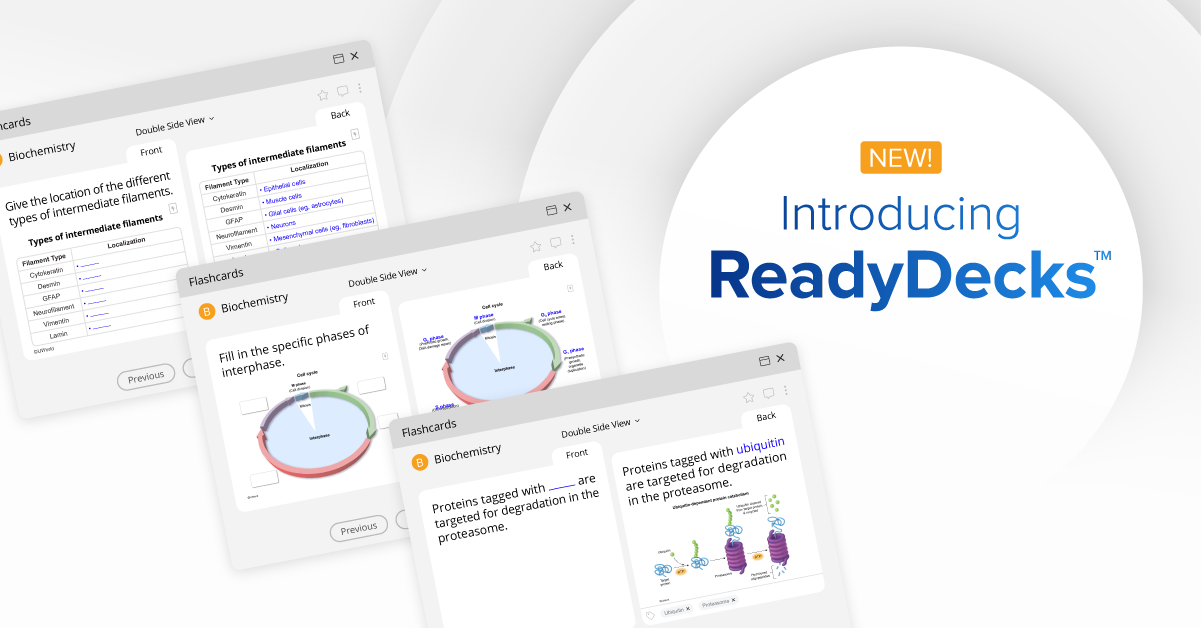By H. Rhodes Hambrick, MD
My Experience with UWorld
As a pediatrics resident, I must have a solid foundation of knowledge to frame my medical decision-making and inform my discussions with patients, their families, and other medical team members. While there is certainly no substitute for clinical experience in gaining this clinical knowledge, I give enormous credit to UWorld for helping me build a solid mental framework on which to superimpose my learning in the clinical setting.
Like many medical students, I found myself somewhat at a loss when I reached the end of my preclinical curriculum a year and a half into medical school. I had memorized a slew of facts every two weeks for each of our class exams but had somehow failed to consolidate that knowledge into a coherent mental model for understanding disease pathophysiology and presentation. My medical school has a model in which students do their major clinical rotations before taking USMLE® Step 1. Given this, as I entered my clerkship year, I wanted to find a resource that would help me review all the knowledge I had encountered as a preclinical student and apply it to the patients I would see on the wards.
I had received consistent advice from older students that the single most useful resource for both learning the fundamentals of clinical medicine and preparing for end-of-clerkship shelf exams was the UWorld Step 2 CK question bank (QBank). Initially, I balked at the price tag for a year-long subscription since I was on a medical student’s budget. However, I ultimately made the purchase. Within moments of opening it, I recognized why the hype was justified: it had a beautiful interface, thousands of thoughtful questions, detailed explanations for each answer choice that reinforced core medical concepts and learning objective summaries.
But more specifically, why is UWorld such an essential resource, not just for preparing for exams but for building a core medical knowledge base? A few key features jump out. First, UWorld is a learning tool, not merely an assessment tool – it’s more of an interactive textbook than a prolonged exam. Second, consistent use of UWorld aligns with core principles of adult learning theory, chiefly forced recall, spaced repetition, priming, and interleaved practice (more on this below). Third, UWorld expertly balances breadth with depth to create a well-rounded learning experience that helps standardize medical education regardless of the distinctive emphasis of a given medical school.
UWorld as a Clinical Learning Tool
During my work as a USMLE tutor, I often hear students say that they have been waiting until their dedicated study period to use UWorld because they don’t want to waste the QBank by using it too early. However, based on my experience, both working with students and my own USMLE exams and medical school clinical rotations (all with scores >270 and with honors), I feel this is a misguided perspective.
UWorld can be used year-round. For especially high-yield topics (eg, hemodynamics in shock), UWorld has created excellent tables and illustrations that help distill the most important take-home points into easily digestible formats for rapid review, with additional details in the text for those seeking a more detailed understanding.
In addition, for diagnoses with clinical overlap and that are often confused with one another (eg, tension pneumothorax vs. cardiac tamponade, ulcerative colitis vs. Crohn disease), UWorld does a masterful job of presenting similar vignettes with just a few key differences between them, to help students identify the distinguishing features among the diagnoses. Students thus become less prone to cognitive biases like anchoring and recency bias. For example, not every child with recurrent respiratory infections has cystic fibrosis; instead, the patient may have chronic granulomatous disease, X-linked agammaglobulinemia, or primary ciliary dyskinesia. In presenting similar vignettes with subtle but key differences, UWorld increases the salience of relevant clinical information and helps students learn the fundamentals of clinical reasoning.
Using UWorld alongside my clinical rotations, I was struck by how often I had done a practice question on a particular topic and found its clinical application relevant within days. For example, I was quizzed in UWorld on the difference between bullous pemphigoid and pemphigus vulgaris; shortly after that, I admitted a patient with pemphigus vulgaris and knew to look for Nikolsky’s sign. Similarly, I had a UWorld question on the differential for new-onset thrombocytopenia; then, on rounds the next day, I correctly suggested testing for HIV and HCV in a patient with a new petechial rash. I did a UWorld question featuring a patient with fever and jaundice, then correctly identified Charcot’s triad of fever, RUQ pain, and jaundice in a patient admitted for acute cholangitis. Indeed, as I used UWorld throughout my clerkship years, my only regret was that I had not used the Step 1 QBank to supplement my pre-clinical studies so that I could have reaped the benefits of UWorld sooner.
UWorld and Adult Learning Theory
Earlier, I noted how UWorld makes effective use of adult learning theory, which made me a more engaged learner by priming me to pay more attention to salient features of patient care. We know that forced recall, or retrieval practice, is crucial for consolidating learning: only by testing ourselves on a given piece of information do we move from passively studying material to remembering it in a durable fashion. Like any QBank or flashcard application, UWorld builds in retrieval practice by making the mechanism of active learning rather than passive.
Beyond that, we know that spaced repetition, or being tested on the same concept over spaced (and, ideally, progressively longer) periods over time, is key to promoting long-term retention of facts. In having such a large QBank with multiple questions testing variations on similar themes, UWorld builds in spaced repetition over the days, weeks, and months that students use it to study. This creates a strong argument for starting the QBank before your dedicated study period: concepts that you learn once during your classes or rotations, then forget, then re-learn during your dedicated period are much more likely to “stick” on test day and, of course, in future clinical practice.
Finally, UWorld does a masterful job incorporating what’s known as interleaved practice – ie, integrating knowledge from different fields so that connections among various subtopics become apparent and learners can construct a more thorough knowledge base. For example, questions on drug side effects require an understanding of disease pathology, and questions on appropriate treatment require an understanding of relevant anatomy. By including many such two-step questions, UWorld helps put knowledge into its proper clinical context so that details are filed away within a broader, well-integrated knowledge framework. While other QBanks employ similar strategies to some degree, I have yet to encounter a QBank that has mastered the above principles as seamlessly as UWorld has.
UWorld: Breadth and Depth
One of the chief difficulties for the students I tutor is identifying what information is relevant from the sea of available medical knowledge. In my experience, preclinical lectures were generally delivered by content experts who gave accurate but very detailed lectures; as a first-time learner, it was not always clear to me what information was most critical to learn (eg, what would be tested) and what information was simply for our edification (eg, the current state of research on a topic). Given that UWorld was the primary educational resource I used throughout my clerkship years and while studying for USMLE Steps 1, 2, and 3, I can confidently state that my understanding of what was essential markedly improved after reviewing the material in UWorld. If UWorld tested a fact or concept, then I needed to know it.
I also found that topics I’d long found confusing (eg, nephrotic vs. nephritic syndrome, metabolic disorders, immunodeficiencies) are organized and reinforced in a way that helped restructure my thinking on the topic. UWorld presents material at a readily understandable level to a newer learner without diluting the quality or quantity of the content presented, making UWorld an invaluable tool for getting a handle on the vast amounts of material necessary for success in medicine.
My Conclusion
To put it simply, UWorld is a masterfully crafted educational resource that can and should be used from the beginning of one’s medical education, not merely during dedicated USMLE test prep periods. I highly recommend early and frequent incorporation of UWorld into any medical student study plan.
Give yourself the best chance to succeed on the USMLE exams when you prepare with UWorld’s suite of USMLE learning tools.




